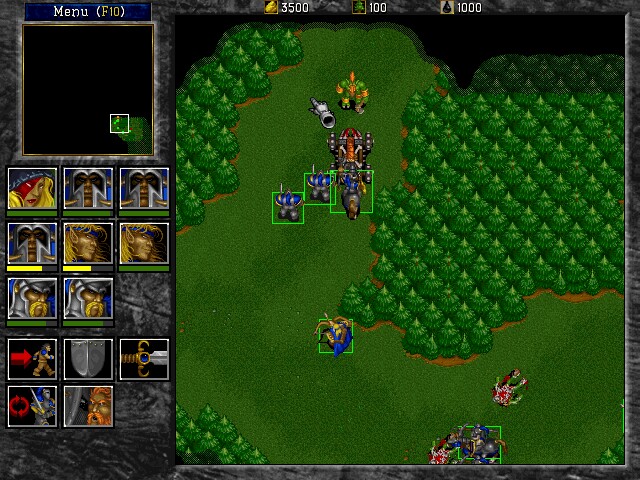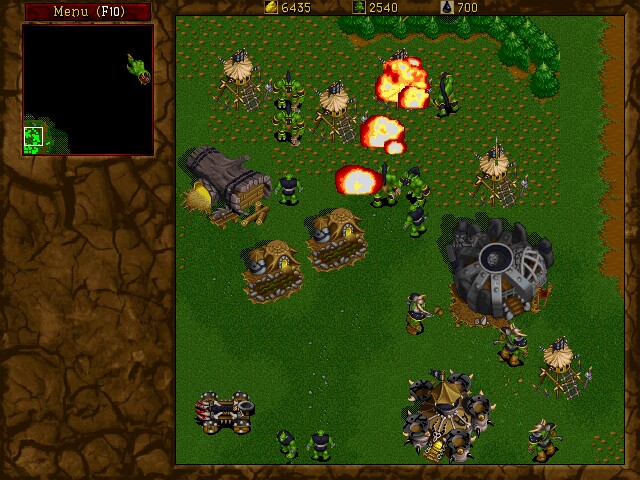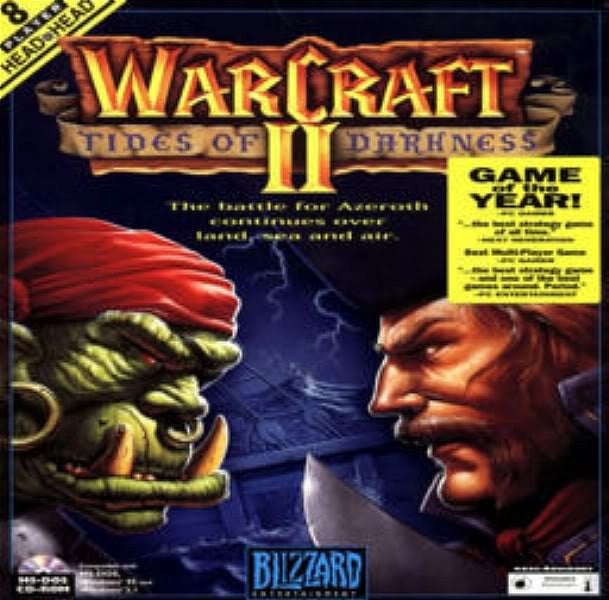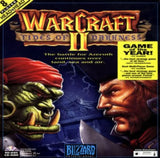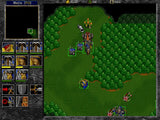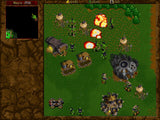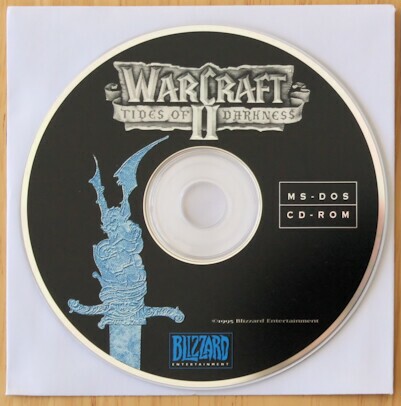
Actual Game
Warcraft II
|
The Game
Warcraft II places you on the world of Argoth, a world of magic, mystery, and war. Years ago (in the first Warcraft game), the evil race of Orcs decided to invade the land of the humans and failed. Now, years later, the Orcs have returned for blood with new technology, magic, and allies. Realizing that the Orcs would surely return, the race of Humans also sought allies and found them. Now allied with powerful technology and magic from the Elves, Dwarfs, Gnomes, and others the humans and their allies stand ready to fight the ultimate battle of survival. To fail is not only to die, but to know that your race will be no more.
In the game, you are given certain missions to accomplish, whether this be building a town, attacking a target, etc. If you succeed in your mission you win and gain points. If you fail, you lose rank, and must begin the mission over again. Warcraft 2 uses numerous buildings, ships, units, and more. Peasants, which you can train from the town hall, build these structures for you so that you may wage war. Some of the structures include: farms - cause everyone needs to eat, town halls - to train peasants, store gold, and wood, barracks - to train archers and footmen to guard your town, and ship yards - to build ships to wage war, transport your warriors, and carry oil. Of course, there are many, many more buildings in the game.
In order to build all of these structures to help in the war effort, you must make use of natural resources. There are 3 natural resources in Warcraft II: gold, wood, and oil. Gold is needed to train footmen, knights, etc; build buildings, and make upgrades to existing units. Wood is needed to build new structures and Oil is required to build powerful warships, refineries, and more.
Weather also comes into play in Warcraft II as the seasons change from spring to summer, fall and winter. While this doesn't seem to have a direct effect on your units, only a fool wouldn't take account of the weather in battle, as your units can walk on the ice that forms during the winter months. Warcraft II demands that you be not only resourceful and cunning, but that you be able to manage your resources as well. Gold mines and oil wells don't last forever so you must budget what you build and take into account your use of such things.
With 14 missions on the human campaign, the first 7 or 8 are desgined to ease you into the game. The difficulty increases such that you will be sorely challenged during the last couple of battles. The result is a superbly balanced game.
At first glance there might not seem to be that many changes to Warcraft 1, but in reality there are numerous additions that, combined, make a striking improvement to the first release. They include:
SVGA graphics: Warcraft II increased screen resolution to 640x480 SVGA, compared to the first Warcraft's standard VGA. Aside from the sheer visual appeal, SVGA terrain and icons are easier to distinguish.
Fog of war: I found this to be the most interesting improvement. Unlike Warcraft I, in this edition you can only see what your units can see, so after exploring land you know the terrain but unless you leave a unit in a location you'll not see any enemy troop movements there. This makes planning more important (and airborne scouting units essential), and makes for great entertainment in multiplayer network games. If you wish, you can disable fog of war and just see all units in any land you've explored, regardless of sighting.
Air and naval units: At first I didn't like this idea; while flying machines and balloons seemed feasible in the Warcraft game setting, oil refining did not. Yet after a short amount of playing the concept grows on you and you get used to it. Adding naval units and transports adds an excellent extra dimension to the game, especially with island-hopping multiplayer battles. In single-player campaigns the naval aspect isn't so hot, as the computer won't build huge fleets like you (should) do. Thus naval warfare isn't as challenging as it might be. The air units work very well with the fog of war rules - you need archers/axemen or guard towers to deter them.
More control: In Warcraft II you can work with groups of up to 9 units rather than just 4. You can set patrol paths for units (between two endpoints, again works well with fog of war). You can tell units to stand firm when attacked, which you couldn't do in Warcraft I - your footmen would always charge the oncoming axemen when you didn't want them to. You can now also order catapults to attack a fixed location as a target. Further, a right click auto-orders your unit, so if you have a peasant selected and right-click a mine, he'll harvest it; if you have a footman selected and right-click an Orc, he'll attack it. Warcraft II shows unit health info to the side of the map rather than on it, that's only to be expected.
Remote building: Warcraft II has no roads, instead you can build anywhere. This is essential if you're building on a distant island, but also useful to speed up harvesting of a mine or wood by building a hall or lumber mill right next to it. Buildings are built on the map and are vulnerable to attack while being built - this deters you building too close to the enemy. You can't just pre-create a building and slap it on the map instantly. This makes for interesting tactics - you can for example build a barracks well away from your village in a more secretive location.
Improved music and sound FX: The music is in fact quite stirring, as it was in the original. The digitized effects and speech are again excellent, and add well to the game atmosphere. Repeatedly clicking on the same unit several times gives amusing results. Of all the background tunes, the Conanesque Orcish one is my favorite.
The editor is pretty much all you could hope for. You can build the map, place buildings and units, gold mines, oil wells, etc, and configure up to eight sides to play on it. It took me about 30 minutes to create a scenario that would play on a large map, and then about another 30 minutes to get comprehensively stuffed by the computer players. This is a good sign - if the campaigns are too easy you can give yourself or your friends a challenge with your own scenario.
Difficulty can be set by how much gold you put in the mines, how close the mines are to the halls, and generally what sort of start you give to the computer players. If you remove resources you can have a straight wargame between two sides. You can set each side (or unit) to be active or passive in nature, and to attack by either land, sea or air. Passive armies are suited for little clusters of dragons or demons around gold mines.
Overall, Warcraft II is a worthy successor to the original game. There's enough new stuff to make it a fresh challenge and fans will appreciate the many and varied improvements the second chapter offers. The SVGA graphics, naval & air units, fog of war and remote building are all extra ingredients for an improved game. To top it off the scenario editor allows extra fun once you've finished both campaigns and played the veteran custom scenarios.
